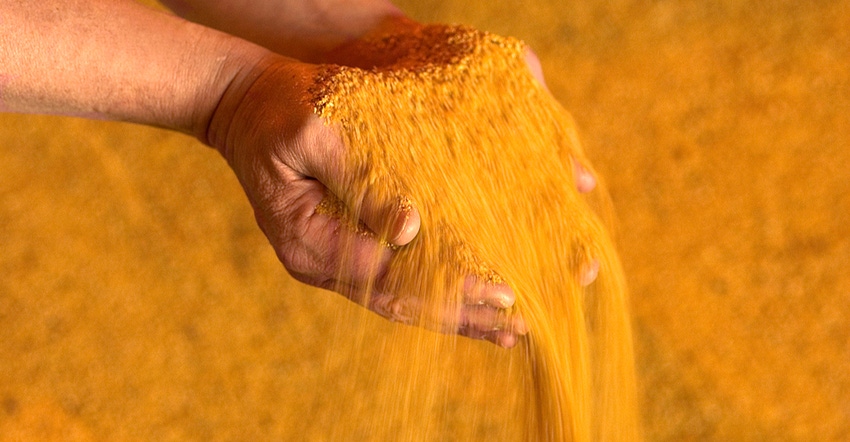August 19, 2019

By Warren Rusche
One of the challenges livestock producers always face is securing adequate amounts of affordable feed.
Drought and floods both periodically reduce supplies of hay, corn and other feedstocks and drive up feed prices.
One strategy to consider is securing a supply of distillers grain when the price is low and storing it.
Predicting prices is an inexact science, but a storage strategy would at least allow you to lock in margins and to secure some of the feed needed for the fall and winter.
Storage options
South Dakota State University has been one of the leaders in distillers grain utilization. A portion of that work has identified several different storage options for wet and modified distillers grain in bunkers or bags.
Storing wet distillers grain (WDG) can be challenging because the product by itself does not readily stack or pack in a bunker or pile. One approach to solve that problem has been to mix about 70% to 80% WDG and 20% to 30% roughage on an as-fed basis. That mixture can then be stored in either a bunker silo or pile and covered with plastic. Another possibility is storing WDG in a silage bag. In this case, care needs to be taken to avoid excess pressure on the bag to prevent rupture.
 STRETCH RATIONS: Silage, hay and distillers grain can be balanced for an affordable ration for cattle and other livestock.
STRETCH RATIONS: Silage, hay and distillers grain can be balanced for an affordable ration for cattle and other livestock.

Because modified distillers grain (MDG) contains less moisture, it lends itself better to being stored in a bunker or pile without being mixed with other roughage compared to WDG. In some cases, mixing 10% roughage would make packing a bunker silo easier. Using either a silage bag or covering a pile or bunker with plastic will help prevent spoilage and dry matter losses until the start of the feeding period.
Bottom line
When weighing whether or not to pre-buy and store distillers grain, consider labor costs, costs of cover or bags and — in the case of WDGs — the availability of low-quality roughage for mixing.
Availability of WDG or MDG could be an issue, too, depending on local plant production schedules and product demand. There is also the impact on cash position and working capital to consider when pre-paying for a large quantity of feedstuff.
Rusche is a SDSU Extension beef feedlot management associate.
You May Also Like




